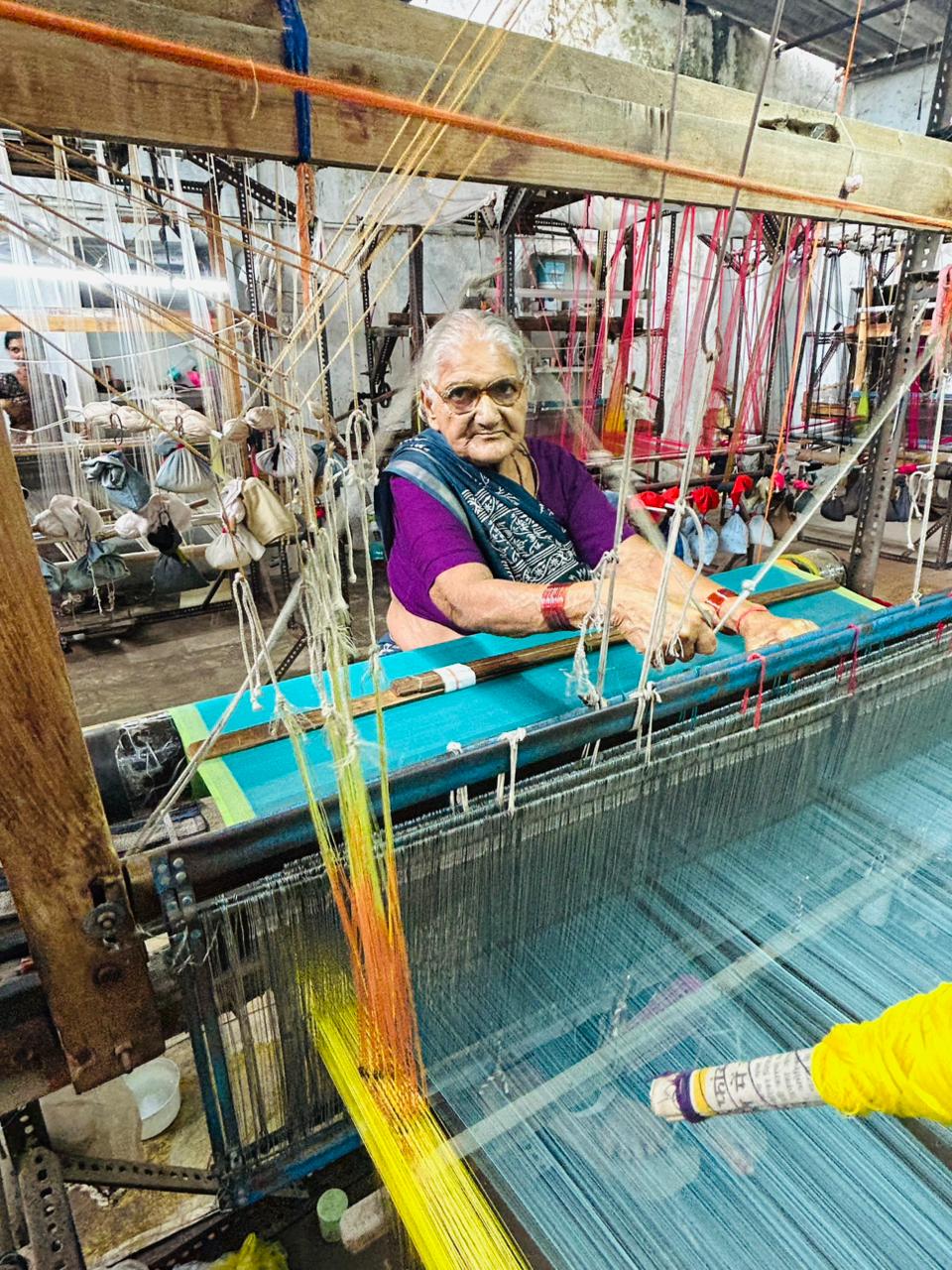
The Timeless Craft of Maheshwari Sarees: A Journey into Heritage and Elegance
The Timeless Craft of Maheshwari Sarees: A Journey into Heritage and Elegance
Meta Description:
Discover the rich heritage and exquisite craftsmanship of Maheshwari sarees — handwoven with silk and cotton, adorned with traditional motifs, and rooted in centuries of Indian textile tradition.
Introduction: The Legacy of Maheshwari Sarees
On the sacred banks of the Narmada River lies Maheshwar, a historic town in Madhya Pradesh where time-honored handlooms still echo the royal past. Maheshwari sarees are not just garments — they are cultural heirlooms, each weave telling a story of devotion, elegance, and artistry.
Worn by royalty and cherished by saree lovers around the world, these sarees represent a timeless blend of tradition and contemporary grace.
What Makes Maheshwari Sarees Unique?
1. Luxurious Yet Lightweight Fabric
Maheshwari sarees are crafted using a unique blend of pure silk and fine cotton, creating a fabric that is:
Soft and breathable
Lustrous yet lightweight
Perfect for all climates and occasions
This combination offers both comfort and elegance — ideal for daily wear, festive events, or as part of a luxury ethnic wardrobe.
2. Iconic Designs and Motifs
Traditional Maheshwari motifs are inspired by the region’s architecture and nature. Signature designs include:
Floral butis (small motifs)
Checks and stripes
Temple-inspired borders (known as “reva” or “narmada lehar”)
Each saree carries patterns that reflect centuries of Indian culture and symbolism.
3. Vibrant Colors and Contrast Borders
Color is a defining feature. Maheshwari sarees showcase:
Rich hues like deep red, peacock green, royal blue, and turmeric yellow
Subtle contrasts between body and border
Elegant pallus with geometric or floral designs
The Traditional Weaving Process
Handwoven on Traditional Looms
Each Maheshwari saree is handcrafted on dobby or jacquard handlooms. The two essential components are:
Warp (Tan): Vertical threads that form the base
Weft (Bana): Horizontal threads that bring in color and design
The weaving demands precision, patience, and years of experience — often passed down through generations of artisans.
The Art of Dyeing Maheshwari Sarees
Natural and Modern Dye Techniques
To bring vibrant life to the yarns, both natural and synthetic dyes are used:
Acid dyes: For silk threads, adding richness and glow
Vat dyes: For cotton, ensuring deep, long-lasting colors
The dyeing process ensures that each thread tells its own story before it is woven into the final masterpiece.
The Royal Origin of Maheshwari Sarees
The legacy of Maheshwari sarees dates back to the 18th century, when Queen Ahilyabai Holkar of the Holkar dynasty invited skilled weavers to Maheshwar.
She envisioned a saree that embodied:
Regal simplicity
Cultural pride
Everyday elegance
Thus, the Maheshwari saree was born — a royal gift to Indian textiles that continues to thrive even today.
Maheshwari Sarees: More Than Just Attire
When you wear a Maheshwari saree, you wear:
The labor of love from skilled artisans
The soul of Maheshwar’s history and culture
A piece of Indian heritage
Whether it’s a wedding, a festive celebration, or a quiet personal moment, a Maheshwari saree elevates every occasion with grace and meaning.
Why Choose a Maheshwari Saree?
✅ Ethically Handwoven
✅ Natural Fibers: Silk + Cotton
✅ Culturally Rich & Artistically Designed
✅ Lightweight & All-Season Wear
✅ A Heirloom Investment
Conclusion: Embrace the Elegance of Maheshwari Weaves
Maheshwari sarees are not just traditional garments — they are woven poems, embodying elegance, history, and artistry. With every drape, you celebrate the dedication of artisans, the beauty of Indian handlooms, and the legacy of a queen.
Explore. Adorn. Celebrate.
Let a Maheshwari saree become a part of your story — timeless, graceful, and rooted in India’s rich textile heritage.
